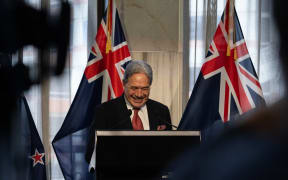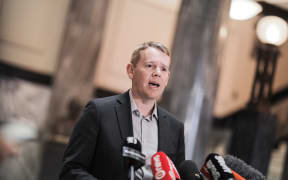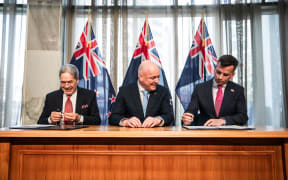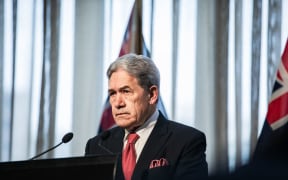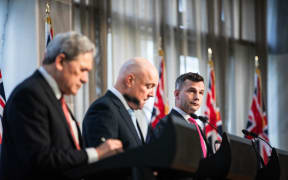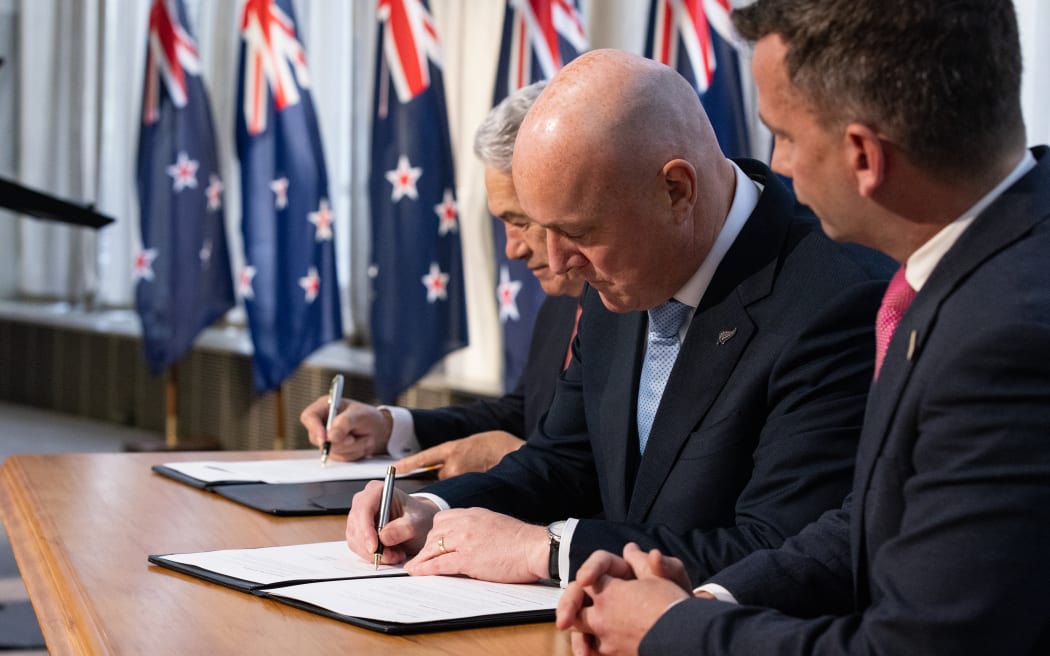
Coalition agreement signing ceremony between Christopher Luxon, David Seymour and Winston Peters. Photo: Phil Smith
Three parties, two coalition deals, one government: details from the negotiations revealed on Friday set out the process for dispute resolution, in case disagreements should arise.
While negotiating the new government, incoming prime minister Christopher Luxon spoke often of how the three parties had followed a process which first dealt with their respective policies, then the relationships between the parties, and finally the ministerial appointments.
That second step has resulted in a process for dispute resolution with language closely resembling one from the first MMP government in 1996 led by National's Jim Bolger and supported by NZ First's Winston Peters: The "Coalition Committee".
The process itself, however, is a bit different.
The 1996 Coalition Committee was arrived at in New Zealand's longest negotiations so far - lasting two months - and resulted in an agreement 73 pages long. It set out a common cause which may sound eerily familiar: "The purpose of the coalition shall be to provide sound and stable Government for New Zealand".
It set clear boundaries for each of the parties: "The parties recognise that no party has an absolute mandate to put its own promised policies in place ... each party will preserve a separate identity and operating procedures in every respect, save and except where such procedures are incompatible with this coalition agreement..."
It also included the creation of a joint committee tasked with managing the new coalition. This committee - which had three members from each of the two parties - aimed to identify any points of contention likely to arise, assist the flow of information, and "act as the communication centre for the development of new policy".
The agreement also set the terms for ending the coalition, one of which was if a "fundamental dispute" was unable to be resolved within seven days of a written notice. Such disputes would be referred to a separate Coalition Dispute Committee including the party leaders and deputies, and the party presidents.
Of course, Bolger was ousted the year after that government was formed, and the coalition dissolved in 1998 after his successor Jenny Shipley sacked Peters.
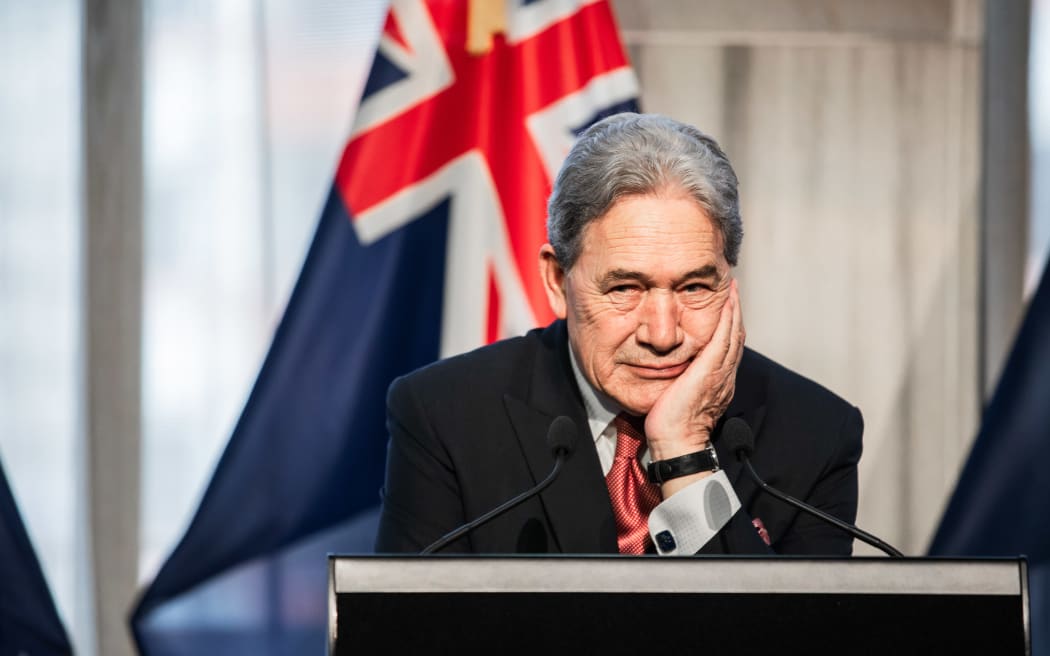
Winston Peters rests his chin in his hand as he and fellow leaders Christopher Luxon and David Seymour together unveil their coalition deals. Photo: RNZ / Samuel Rillstone
Back to the future, and the two 2023 coalition deals also set some boundaries. Both have identical wording around the party relationships, except the parties being referred to.
"The parties will work together in good faith and cooperate with each other ... the parties will consult closely with each other in a genuine and timely manner on all matters of importance ... the parties agree to work in good faith and undertake best endeavours to achieve consensus on Cabinet decisions, with due consideration to the positions of each party."
It also sets up a Coalition Committee, this time made up of the leader and deputy of each party (or agreed replacements) and the Leader of the House, to "monitor government progress against each item in the coalition agreements".
The method for resolving disputes is a little different, however, with concerns to be raised "in confidence as soon as possible and in good faith", starting with the chiefs of staff then "responded to expeditiously".
If this fails to satisfy whichever leader raised the matter - either because they're not satisfied with the result or because it needs "urgent resolution" that leader can then "refer the matter for direct discussion between the party leaders".
The deals also set out a framework of "principles" for ongoing decision-making - starting with Principle A: being principled.
This is defined as being "based on sound public policy principles, including problem definition, rigorous cost benefit analysis and economic efficiency".
The second point is to be "focused", which includes seven different priorities. The first is "lifting New Zealand's productivity and economic growth to increase opportunities and prosperity for all New Zealanders".
Points C through H require the coalition to be "results-driven", "people-focussed", "accountable", "evidence-based", "fiscally responsible", and "pro-democracy".
Unsurprisingly there are also several "no surprises" clauses, where the parties are required to inform each other "confidentially and promptly of matters of significance"; alongside clauses requiring ministers to be bound by the Cabinet Manual and operate in accordance with the convention of collective responsibility.
There is also provision for the parties to "agree to disagree" - in line with the Cabinet Manual - and take different public positions on certain issues. However, this must first go through the dispute resolution process outlined above.
"The parties may "agree to disagree" on the matter if it remains unresolved following the clause 22 process. Subject to this "agree to disagree" process, a Minister's support and responsibility for the collective government position must always be clear ... Agree to disagree matters, including any matters beyond those set out in this agreement, will be dealt with on a 'no surprises' basis."
Labour leader Chris Hipkins has already spoken about the agreements pointing towards a "government that drives people apart". Only time will tell whether that comes to pass - even including the government itself.

